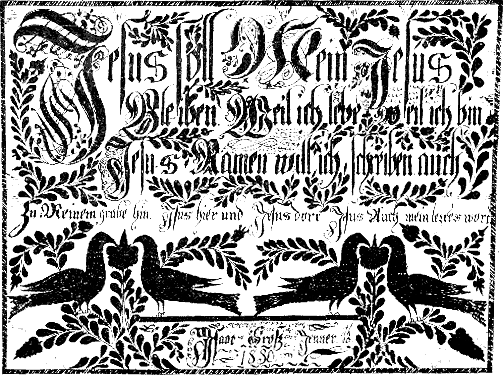Henry Chapman Mercer
Today, a shy aristocrat redirects anthropology. The University of Houston's College of Engineering presents this series about the machines that make our civilization run, and the people whose ingenuity created them.
Henry Mercer was born in 1856 into a well-to-do Doylestown, Pennsylvania, family and educated in private schools. A major influence in his early life was his Aunt Lela. Aunt Lela was Elizabeth Lawrence whom Henry James knew, admired, and used as the model for Madeleine Lee in his novel, Democracy. Aunt Lela was a whirlwind who swept Mercer into social life and powerfully fed his sense of self something he'd need where he was headed in life.
Mercer's biographer Cleota Reed describes him as intelligent and shy, handsome and aloof [1]. He never married. He studied law at Harvard, but he soon switched to art and architecture. First he saw technology as art, then he saw art as archaeology. When he was only 29, he wrote a book on Yucatan architecture — trying to connect it with our early Indian culture.
Meanwhile, he began collecting the stuff of American folk cultures: wagon fittings, pottery, illuminated manuscripts, naive art, clothing — an actual gallows. Mercer worked as a museum curator, a field anthropologist, an exhibit director, all the while writing books and articles. But his aloof ways finally drove him from public museum work and into another, very different, world.
For Mercer, art, anthropology, and craft were all of a piece. To understand a people, you had to feel their crafts with your own fingers. He was strongly drawn to German and Moravian settlers in Pennsylvania. In 1898 he built the first of his many cast-concrete structures, a pottery works for making Moravian-style tiles. That operation grew into a huge U-shaped building embossed everywhere with elaborate tilework — still there today. Mercer's tiles, elegant as the best medieval ones, can be found all over America today — tile stoves, fireplaces, altar pieces, murals, paving stones.
He saw the carryover of a far older world all around him. He wrote on medieval manuscript calligraphy, still used by the Pennsylvania Dutch. In 1914, he created a great seven-story cast-concrete museum to hold all the neo-medieval technology he'd collected — technologies being forever replaced by the modern world. The building itself looks like a late medieval castle. And when he'd finished it, he gave it to the Bucks County Historical Society.
Mercer's upbringing taught him to think like an aristocrat. But, for him, that meant a fierce independence. He reminded anthropologists that one of their tasks was to learn how we ourselves were formed. That meant developing intimacy with processes that formed us, processes now on the verge of extinction. In a 1911 lecture on his tiles, he articulated the forces that, through him, were changing the field of anthropology. He said,
[This] survival, here in our midst, of an ancient art with a brilliant history reaching back to the beginning of civilization [has] changed the current of my life.
I'm John Lienhard, at the University of Houston, where we're interested in the way inventive minds work.
(Theme music)
1. Reed, C., Henry Chapman Mercer and the Moravian Pottery and Tile Works. Philadelphia: University of Pennsylvania Press, 1986.
For more on Henry Mercer, see Episodes 271 and 1048. See also the Henry Mercer Wikipedia page.
Here is a slide show of my photos of Mercer's museum, Fonthill Castle, and more.

An example of old European 'Fraktur" writing practiced by the Pennsylvania Dutch and presented in a paper by Henry Mercer
Image courtesy of Special Collections, UH Library